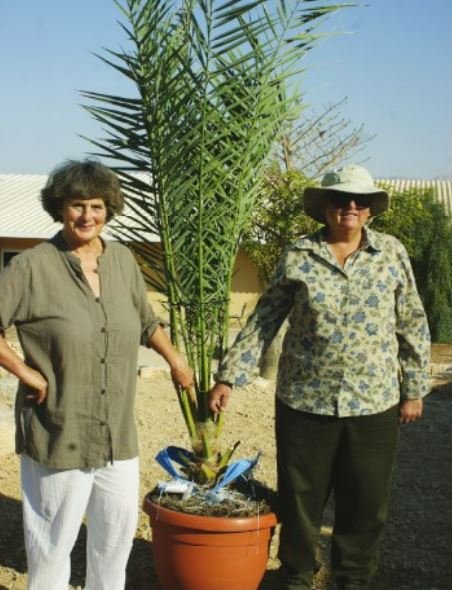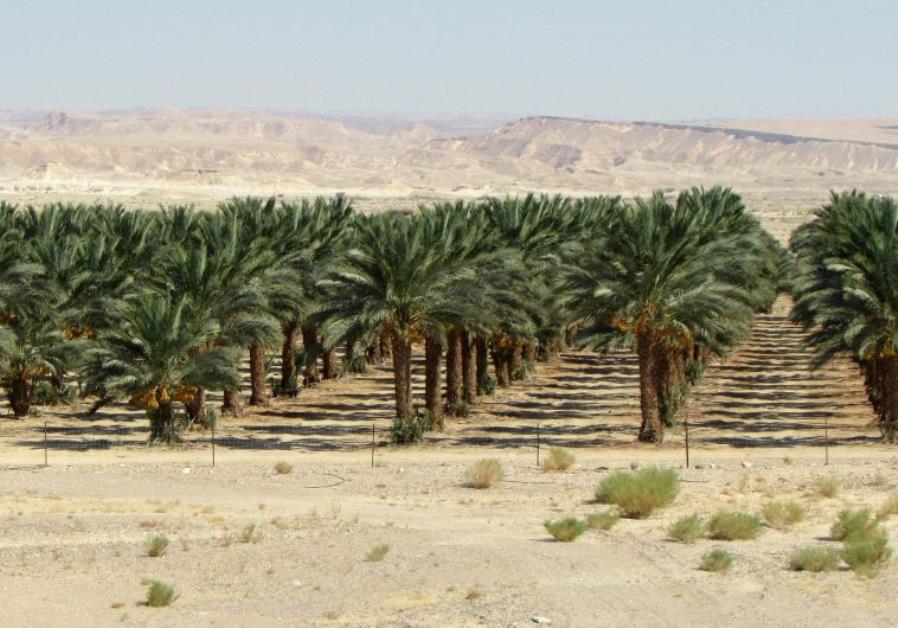According to the Hebrew calendar, this Sunday night is the fifteenth day of Shevat, and is celebrated as the New Year for Trees. In honor of this we present a re-post about the roots of the date palm tree, with a terrific new ending.
בבא בתרא כז ,ב
אמר עולא אילן הסמוך למצר בתוך שש עשרה אמה גזלן הוא ואין מביאין ממנו בכורים עשרה אמה... ותו לא והא תנן מרחיקין את האילן מן הבור כ"ה אמה אמר אביי מיזל טובא אזלי אכחושי לא מכחשי אלא עד שש עשרה אמה טפי לא מכחשי
Ulla said: An individual who owns a tree that is within sixteen cubits of a boundary is a robber, [since it draws nourishment from the neighbor’s land,] and one does not bring first fruits from it, [since that would be a mitzva that is fulfilled by means of a transgression]... But do roots extend sixteen cubits and no more? Didn’t we learn in a Mishnah (25b): One must distance a tree twenty-five cubits from a cistern? [This indicates that tree roots reach more than sixteen cubits.] Abaye said: The roots extend farther, but they drain the earth of nutrients within sixteen cubits; with regard to an area any more distant than that, they do not drain the earth.
The Root Systems of the Date Palm Tree
While the Talmud doesn't specify the kind of tree that must be distanced from others, in Mesepotamia the most likely candidate was the Date Palm, Phoenix dactylifera. These trees grow to a height of 75 feet, and you've seen plenty of them if you've driven south towards Eilat. Here is their root system:
USDA image from Chao. C, Krueger R. The Date Palm (Phoenix dactylifera L.): Overview of Biology, Uses, and Cultivation. Hort. Science 2007 42(5); 1077-1082.
To whom shall we turn to get information about the size of that root system? The United Nations Food and Agriculture Organization, of course. According to a helpful document by a member of their Date Production Support Programme, "Roots are found as far as 25m from the palm and deeper than 6m, but 85 percent of the roots are distributed in the zone of 2 m deep and 2m on both lateral sides in a deep loamy soil." But the 25m (82 foot) roots are an extreme. Most of the roots extend about 10m (about 32 feet).
Table from here.
It would appear that Abaye was referring to the average reach of the zone II roots. Assuming that a talmudic amah is between 48-57cm, Abaye's figure would put the zone II distance of at 7.6-9.1 m. That's right in keeping with the 10m average figure from the UN document. It is good to know that on these important matters, the UN and the Jewish People are in agreement.
“צַ֭דִּיק כַּתָּמָ֣ר יִפְרָ֑ח כְּאֶ֖רֶז בַּלְּבָנ֣וֹן יִשְׂגֶּֽה׃
The righteous shall flourish like the palm tree”
Now, about that oldest palm tree
In recent post, the Hebrew University published a fascinating piece called The Magical Reincarnation of the Ancient Date Tree. In 1963, Professor Yigal Yadin found some seeds from a palm in the ruins of Herod’s palace on Masada. After some radiocarbon testing, they were dated to around 155 BCE and 64 CE, making them around two thousand years old. These ancient seeds were held at Bar-Ilan University, waiting for a clever person to see if they could be re-animated into baby palm trees.
In 2005, that person turned up. She was Dr Elaine Solowey of the Arava Institute in the Negev. To get the seeds into a suitable state to germinate, Dr Solowey, an expert in endangered medical herbs, incubated them in a baby’s bottle warmer, and slowly hydrated them. Then some growth hormones and fertilizers were added, and… a baby sapling sprouted. Dr Solowey named the sapling Methusalah, after the person who had the longest lifespan recorded in the Bible: 969 years. A male sapling later grown from the same batch of seeds was named “Adam”, and a female sapling was named Hannah. The trees flourished and produced dates, which were later harvested.
(These old-new palm trees were once listed by the Guiness Book of Records, but they are not the oldest trees in the world. This title went to to a bristlecone pine (Pinus longaeva) known as Prometheus. In 1963 it was cut down (!) from Mt Wheeler in Nevada. After counting its 4,867 yearly rings, and adjusting for slower growth rate due to the harsh environment in which it grew, the tree was estimated to have been an incredible 5,200 years old.)
So next time you are near Ketura just north of Eilat, take a detour and go visit Methusalah and his siblings. Actually, it is a wonderful activity for this Monday, Tu Bishvat. Say hi from me.
Dr. Elaine Solowey (left), Methuselah (center) and Dr. Sarah Sallon, (right), circa 2008. Courtesy of the Arava Institute. Image from here.





